
How to Use 5V PSU: Examples, Pinouts, and Specs
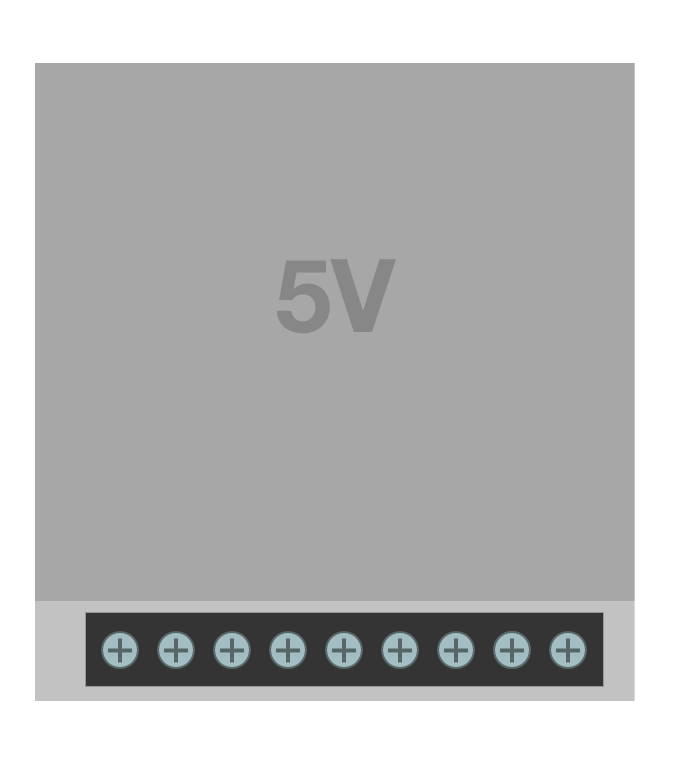
 Design with 5V PSU in Cirkit Designer
Design with 5V PSU in Cirkit Designer5V Power Supply Unit (PSU) Documentation
1. Introduction
The 5V Power Supply Unit (PSU), manufactured by Conor Curley, is a compact and reliable power source designed to provide a stable 5-volt output. This PSU is ideal for powering a wide range of electronic circuits and devices, ensuring consistent voltage for reliable operation. It is commonly used in microcontroller-based projects, sensors, and low-power electronic devices.
Common Applications:
- Powering microcontrollers (e.g., Arduino, Raspberry Pi, ESP32)
- Supplying power to sensors, actuators, and modules
- Driving low-power LEDs and displays
- Providing a stable voltage source for breadboard prototyping
- Powering small IoT devices and embedded systems
2. Technical Specifications
The following table outlines the key technical details of the 5V PSU:
| Parameter | Specification |
|---|---|
| Manufacturer | Conor Curley |
| Output Voltage | 5V DC ± 5% |
| Input Voltage Range | 7V - 12V DC |
| Maximum Output Current | 1A |
| Efficiency | ≥ 85% |
| Ripple Voltage | ≤ 50mV |
| Operating Temperature | -20°C to +70°C |
| Dimensions | 25mm x 20mm x 15mm |
| Weight | 10g |
Pin Configuration and Descriptions
| Pin Name | Description |
|---|---|
| VIN | Input voltage (7V - 12V DC) |
| GND | Ground (common reference for input and output) |
| VOUT | Regulated 5V DC output |
3. Usage Instructions
Connecting the 5V PSU in a Circuit
- Input Voltage: Connect a DC power source (7V - 12V) to the
VINpin. Ensure the input voltage is within the specified range to avoid damage. - Ground Connection: Connect the
GNDpin to the ground of your circuit. - Output Voltage: Use the
VOUTpin to power your 5V devices or circuits.
Important Considerations:
- Input Voltage Range: Ensure the input voltage is within the specified range (7V - 12V). Exceeding this range may damage the PSU.
- Current Limit: Do not exceed the maximum output current of 1A. Overloading the PSU may cause overheating or failure.
- Heat Dissipation: If the PSU operates near its maximum current rating, ensure proper ventilation to prevent overheating.
- Polarity: Double-check the polarity of the input and output connections to avoid damage to the PSU or connected devices.
Example Circuit:
Below is an example of using the 5V PSU to power an Arduino UNO and a sensor:
+-------------------+ +-------------------+
| DC Power Supply | | Arduino UNO |
| (7V - 12V) | | |
| | | |
| +---- VIN ------+-------+ VIN |
| | | | |
| +---- GND ------+-------+ GND |
| | | |
+-------------------+ +-------------------+
4. Arduino Example Code
The 5V PSU is commonly used to power Arduino projects. Below is an example code to read data from a temperature sensor (e.g., LM35) powered by the 5V PSU:
// Example: Reading temperature data from an LM35 sensor
// Ensure the LM35 is powered by the 5V PSU's VOUT pin
const int sensorPin = A0; // LM35 sensor connected to analog pin A0
void setup() {
Serial.begin(9600); // Initialize serial communication at 9600 baud
}
void loop() {
int sensorValue = analogRead(sensorPin); // Read the analog value from the sensor
float voltage = sensorValue * (5.0 / 1023.0); // Convert to voltage (5V reference)
float temperature = voltage * 100.0; // Convert voltage to temperature (°C)
Serial.print("Temperature: ");
Serial.print(temperature);
Serial.println(" °C");
delay(1000); // Wait 1 second before the next reading
}
Notes:
- Connect the
VOUTpin of the PSU to the5Vpin of the Arduino UNO. - Ensure the sensor's ground is connected to the PSU's
GNDpin.
5. Troubleshooting and FAQs
Common Issues and Solutions
| Issue | Possible Cause | Solution |
|---|---|---|
| No output voltage | Incorrect input voltage or polarity | Verify input voltage and polarity |
| Output voltage is unstable | Overloading the PSU | Reduce the load to within 1A limit |
| PSU overheating | Operating near maximum current limit | Improve ventilation or reduce load |
| Connected device not working | Loose or incorrect connections | Check all connections and wiring |
Frequently Asked Questions (FAQs)
Q1: Can I use the 5V PSU to power a Raspberry Pi?
A1: No, the Raspberry Pi typically requires a higher current (2.5A or more). This PSU is limited to 1A and is not suitable for powering a Raspberry Pi.
Q2: What happens if I exceed the input voltage range?
A2: Exceeding the input voltage range (7V - 12V) may damage the PSU. Always use a regulated DC power source within the specified range.
Q3: Can I use this PSU to power multiple devices?
A3: Yes, as long as the total current draw does not exceed 1A. Ensure proper wiring and connections.
Q4: Is the PSU protected against short circuits?
A4: This PSU does not include built-in short-circuit protection. Avoid shorting the output pins to prevent damage.
6. Conclusion
The 5V Power Supply Unit (PSU) by Conor Curley is a versatile and reliable component for powering low-power electronic devices and circuits. Its stable 5V output and compact design make it an essential tool for hobbyists, students, and professionals working on microcontroller-based projects. By following the usage instructions and best practices outlined in this documentation, you can ensure safe and efficient operation of the PSU in your projects.
Explore Projects Built with 5V PSU
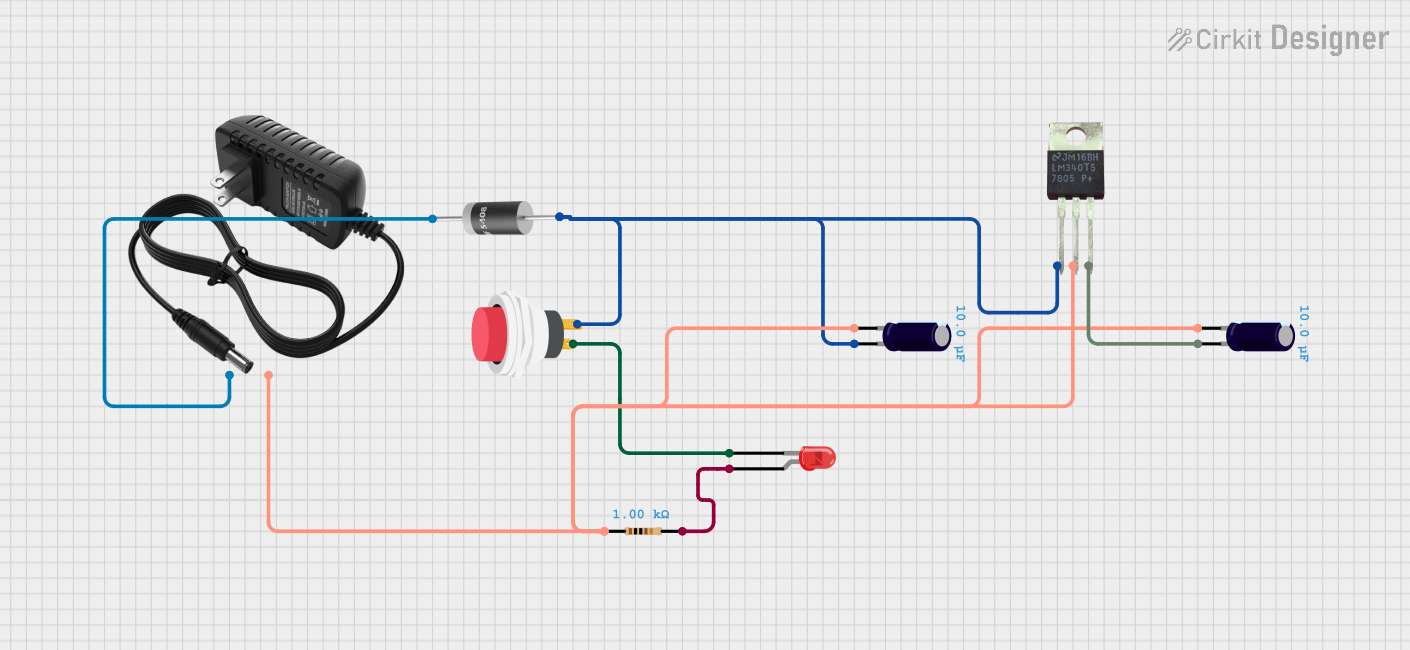
 Open Project in Cirkit Designer
Open Project in Cirkit Designer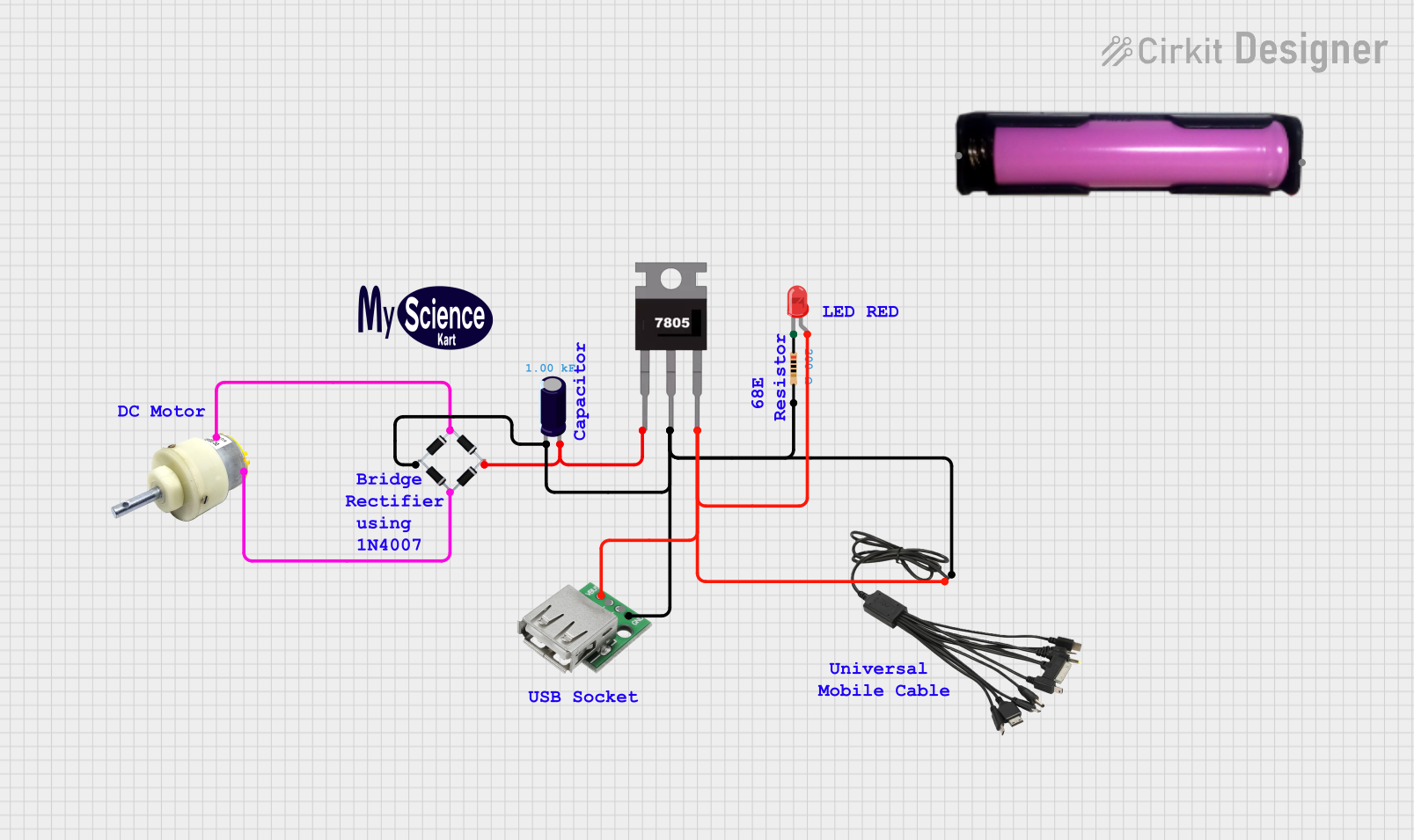
 Open Project in Cirkit Designer
Open Project in Cirkit Designer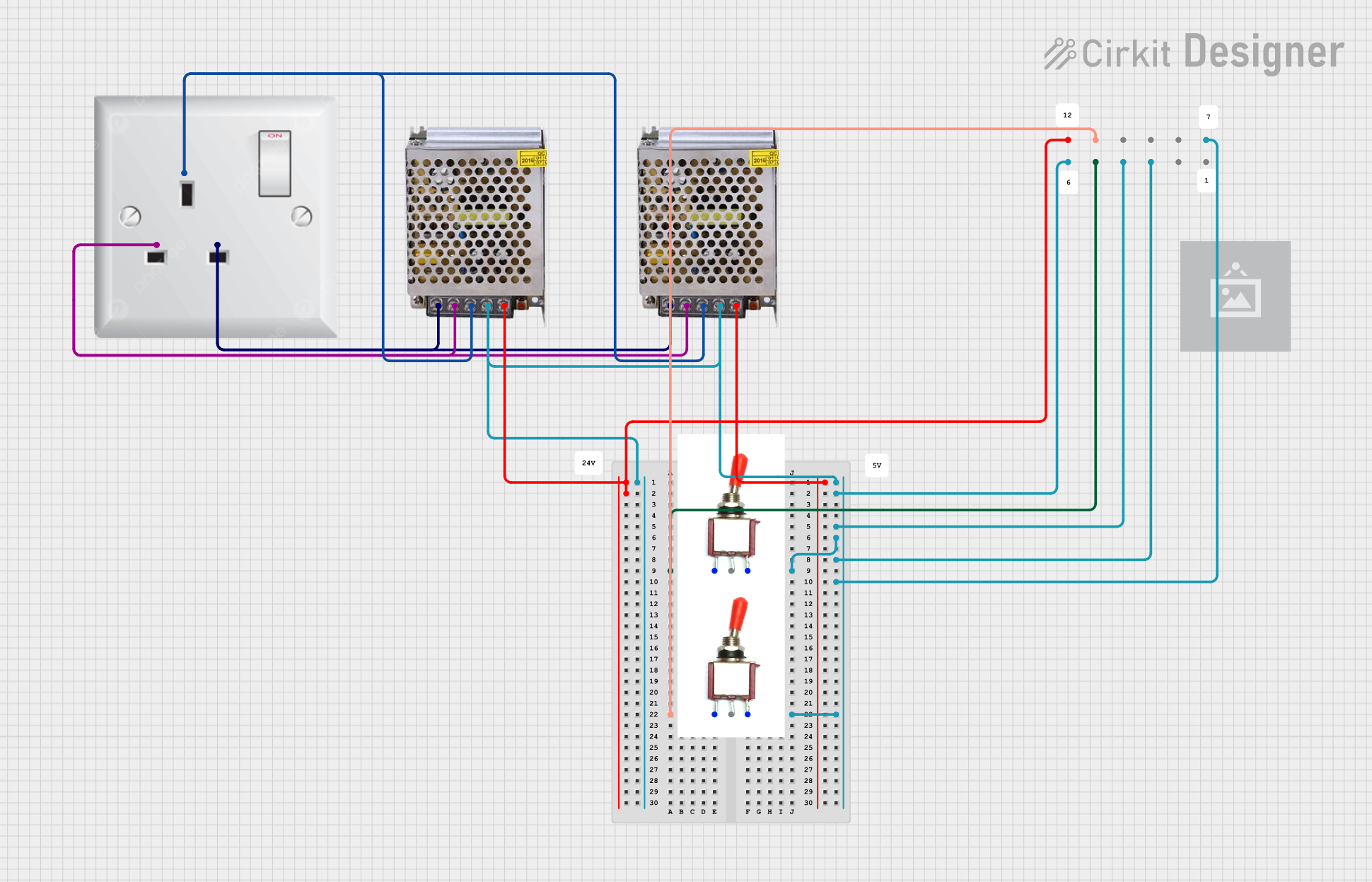
 Open Project in Cirkit Designer
Open Project in Cirkit Designer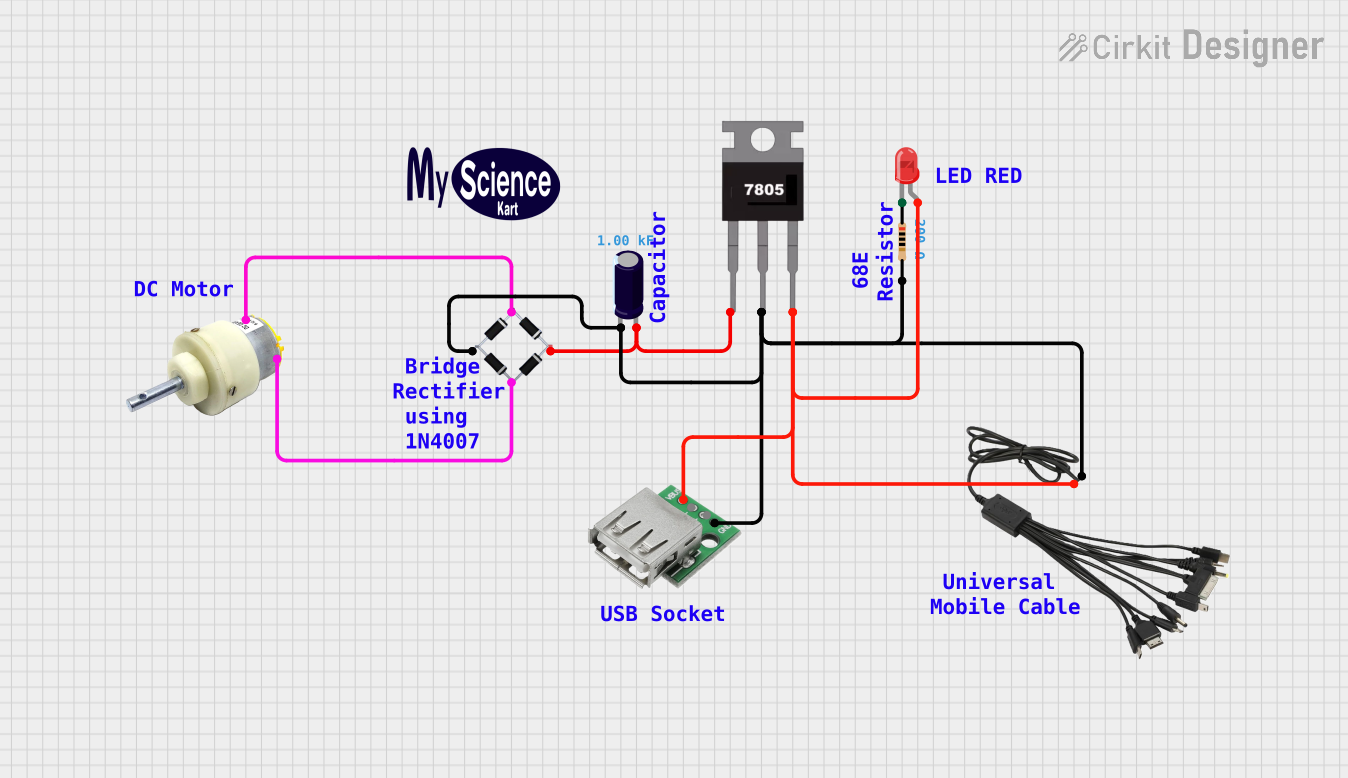
 Open Project in Cirkit Designer
Open Project in Cirkit DesignerExplore Projects Built with 5V PSU

 Open Project in Cirkit Designer
Open Project in Cirkit Designer
 Open Project in Cirkit Designer
Open Project in Cirkit Designer
 Open Project in Cirkit Designer
Open Project in Cirkit Designer
 Open Project in Cirkit Designer
Open Project in Cirkit Designer